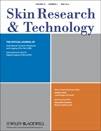Thermography-measured effect of capsaicin, methylprednisolone and mitomycin on the survival of random skin flaps in rats
Abstract
Aims: This study was designed to determine if steroids, capsaicin and mytomicin improved skin flap survival in rats, and it has confirmed that thermography is an effective method to measured skin flap vitality.
Methods: Forty female Wistar rats were randomised into four groups. A standardised full thickness inferiorly based dorsal random-pattern skin flap was raised, and a gelatine sponge was placed before suturing between the flap and its recipient bed, soaked with 0.9 % saline in the control group and with capsaicin, methylprednisolone and mitomycini in the experimental groups. Vitality of the flap and of the survival area was measured by infrared thermography.
Results: Methylprednisolone statistically significant decrease skin flap necrosis, approximately 56%, when compared with controls (P< 0.05).
Conclusion: Corticosteroids applied subcutaneously in a single dose on a gelatine sponge produced a statistically significant improvement of the survival of random skin flaps in rats, whereas capsaicin and mitomycin showed no improvement.




